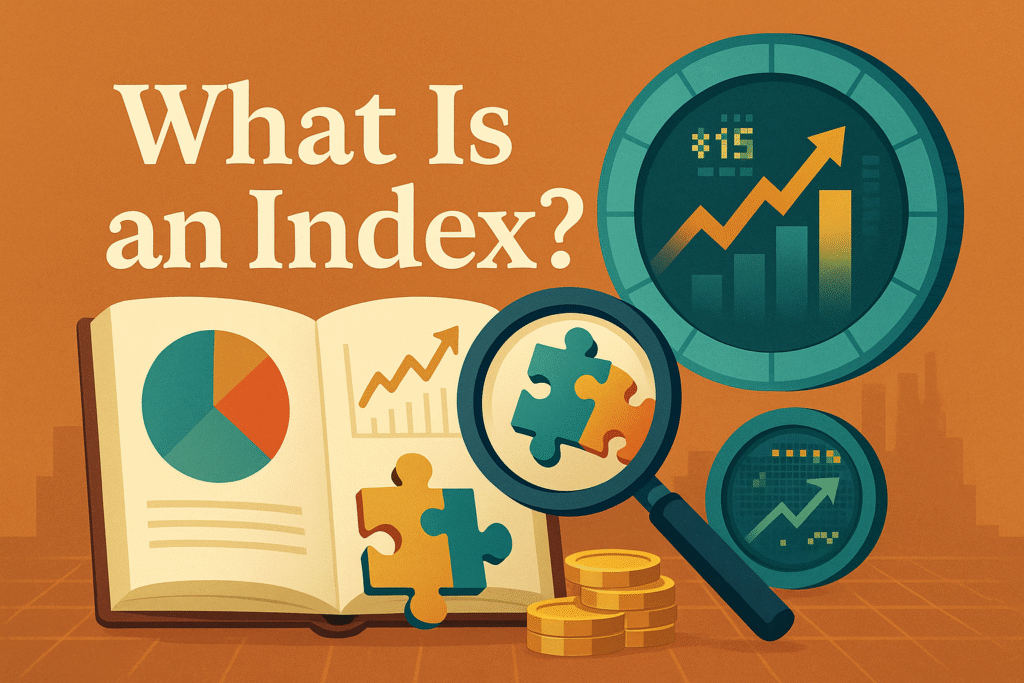A numerical indicator that aggregates price or value data from a defined set of securities, assets, or economic variables—thereby transforming many moving parts into one easy‑to‑track figure.

1. Why Indices Exist
To begin with, markets are awash with individual prices. Instead of monitoring thousands of stocks or bonds separately, investors rely on indices to summarise broader trends quickly. Consequently, a single data point—say, the S&P 500 level—instantly conveys how U.S. large‑cap equities fared today.
2. Essential Building Blocks
| Step | Description |
|---|---|
| Universe Definition | Decide which assets belong (e.g., top 500 U.S. stocks). |
| Weighting Method | Price‑weighted, market‑cap, equal‑weight, or factor‑tilted. |
| Divisor & Base Value | Scale the first index calculation to a round number (100 or 1 000). |
| Maintenance Rules | Rebalance weights and reconstitute membership on a set schedule. |
Because each provider tunes these levers differently, two “similar” indices can yield distinct returns.
3. Price vs. Total Return
Furthermore, indices come in two flavours:
- Price Index – Measures pure price movement.
- Total‑Return Index – Reinvests dividends or coupon payments, portraying the full investor experience.
Therefore, when comparing performance, ensure you match series types.
4. Types of Indices
Beyond equities, indices cover virtually every asset class:
- Fixed Income – Bloomberg Global Aggregate tracks bonds in 25 currencies.
- Commodities – S&P GSCI rolls 24 futures into one energy‑heavy basket.
- Real Estate – FTSE Nareit All REITs bundles U.S. property trusts.
- Macro Indicators – Consumer‑price and purchasing‑manager indices summarise economic health.
Thus, indices serve analysts, portfolio managers, and policymakers alike.
5. Common Uses
- Benchmarking – Active funds measure alpha relative to an index.
- Passive Investing – ETFs and index funds replicate rules to deliver low‑cost exposure.
- Derivatives Pricing – Futures and options settle against index levels.
- Economic Signals – Central banks watch bond and equity indices for market sentiment.
6. Key Takeaways
In summary, an index distills many data points into one clear metric. Its construction—universe, weighting, divisor, and maintenance—determines how faithfully it mirrors the targeted market slice. As a result, indices underpin benchmarking, passive investing, derivatives, and macro analysis across global finance.